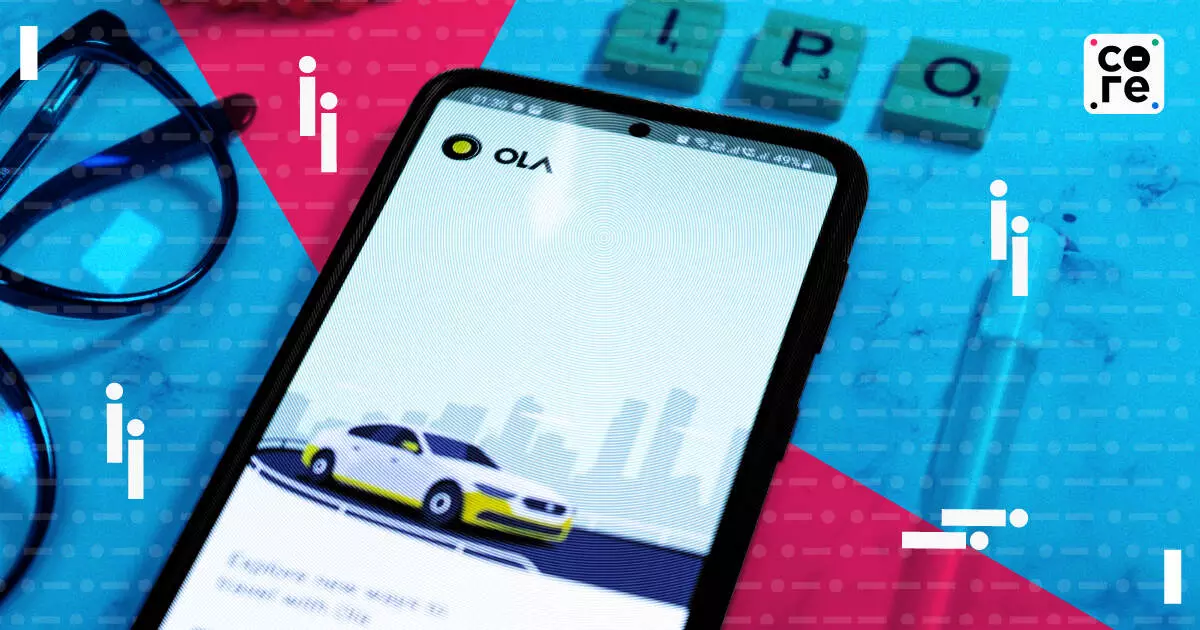
Ola Consumer’s IPO Puzzle: Can Bhavish Aggarwal Sell a Fading Business to Public Investors?
Ola Consumer’s IPO will depend on its offer-for-sale structure and the willingness of its 53 existing investors—who have poured in $4 billion in equity and debt—to stay on board

Ola Cabs, once a dominant force in India’s ride-hailing industry, has evolved into something far more complex. Housed under ANI Technologies Pvt Ltd, the brand Ola is now a sprawling, unlisted private entity repositioning itself as a "consumer tech conglomerate." The company has expanded beyond its core cab business into AI, mapping services, and financial products, all bundled under the umbrella of Ola Consumer. But despite the flashy rebranding, business isn’t going well.
At a grand Independence Day event on August 15, 2024, Ola CEO Bhavish Aggarwal made a series of ambitious announcements—AI chips, dark stores, grocery and food delivery. While Aggarwal framed this as an exciting new chapter, it was, in reality, an attempt to unify scattered business units under a single identity, as reported by The Economic Times last month.
The Ride-Hailing Business Is In Decline
Beneath the bold expansion plans lies a sobering reality: Ola’s ride-hailing business, the foundation of its empire, is struggling. According to startup news portal Entrackr, revenues...
Ola Cabs, once a dominant force in India’s ride-hailing industry, has evolved into something far more complex. Housed under ANI Technologies Pvt Ltd, the brand Ola is now a sprawling, unlisted private entity repositioning itself as a "consumer tech conglomerate." The company has expanded beyond its core cab business into AI, mapping services, and financial products, all bundled under the umbrella of Ola Consumer. But despite the flashy rebranding, business isn’t going well.
At a grand Independence Day event on August 15, 2024, Ola CEO Bhavish Aggarwal made a series of ambitious announcements—AI chips, dark stores, grocery and food delivery. While Aggarwal framed this as an exciting new chapter, it was, in reality, an attempt to unify scattered business units under a single identity, as reported by The Economic Times last month.
The Ride-Hailing Business Is In Decline
Beneath the bold expansion plans lies a sobering reality: Ola’s ride-hailing business, the foundation of its empire, is struggling. According to startup news portal Entrackr, revenues from cab services—still responsible for 87.5% of Ola’s operating income—fell 11.3% in FY24, dropping from Rs 1,985 crore in FY23 to Rs 1,761 crore. Meanwhile, Ola continues to lose market share to competitors like Uber and Rapido, further intensifying its slowdown. In fact, a report by News18 said that in the past three years, Ola and Uber's combined market share has dwindled from over 90% to around 60-70% losing mainly to Rapido.
In an effort to reclaim its mobility stronghold, the company launched Ola Prime+ in late 2023, promising rides without cancellations and top-rated drivers. Ironically, this move was an attempt to fix the very problem Ola and Uber were supposed to solve when they first disrupted traditional taxi services.
While ride-hailing struggles, Ola’s financial services division—selling loans and insurance to Ola Electric scooter buyers—has been its only bright spot. This segment saw a 3.6x jump in revenue, from Rs 63 crore in FY23 to Rs 227 crore in FY24. Additionally, interest on deposits brought in Rs 192 crore, pushing Ola Consumer’s total income to Rs 2,204 crore—though still slightly down from Rs 2,277 crore in FY23.
On the expense front, Ola’s total expenditure fell 16.3% to Rs 2,107 crore, meaning the company spent Rs 0.89 to earn every rupee. While cost-cutting helped reduce losses, it remains to be seen whether these numbers indicate genuine financial stability or just creative accounting ahead of an IPO.
IPO Plans Amid Unanswered Questions
Reports suggest Ola Consumer is gearing up to go public, with plans to file its draft prospectus soon. However, it remains unclear how much capital the company aims to raise or at what valuation. A venture capital investor with large investments in India’s internet sector told The Core that Ola’s financials have always been perplexing, and he questions how Ola Electric managed to push through its IPO under similar circumstances.
“Many startups today are rushing their public offerings not because they are operationally ready, but because their investors are seeking exits,” said the investor, who requested anonymity. “Looking at Ola’s financial reporting over the years, it has always been opaque. It’s difficult to break down how they report revenue and justify costs.”
A closer look at Ola Consumer’s financials accessed by TheCore showed that the total outstanding debt—including both non-current and current borrowings—stood at Rs 602.9 crore in FY24, significantly down from Rs 1,468.1 crore in FY23. While the company has managed to reduce its debt burden, its flagship cab business is losing relevance. At the same time, legal challenges—including an ongoing dispute with MapMyIndia over unauthorized data usage—pose additional risks.
With an IPO on the horizon, investors will need to ask tough questions: Can a struggling ride-hailing business, an unproven AI venture, and a fledgling fintech arm justify public investment? Is Ola banking on brand loyalty and investor FOMO rather than financial fundamentals?
As the venture capitalist quoted above put it: “Ola seems to be banking on a strategy where if they can convince a couple of core mutual funds to invest, other domestic institutions and even retail investors (especially in tier two and three cities, where brand recognition is strong) will follow, irrespective of a fully transparent financial rationale.”
Ultimately, Ola’s ability to secure a successful listing will depend on its offer-for-sale structure and the willingness of its 53 existing investors—who have poured in more than $4 billion in equity and debt—to stay on board. But unless Ola provides clearer financial disclosures and a convincing growth roadmap, its IPO might struggle to find takers in an increasingly cautious market.
Ola Consumer’s IPO will depend on its offer-for-sale structure and the willingness of its 53 existing investors—who have poured in $4 billion in equity and debt—to stay on board

